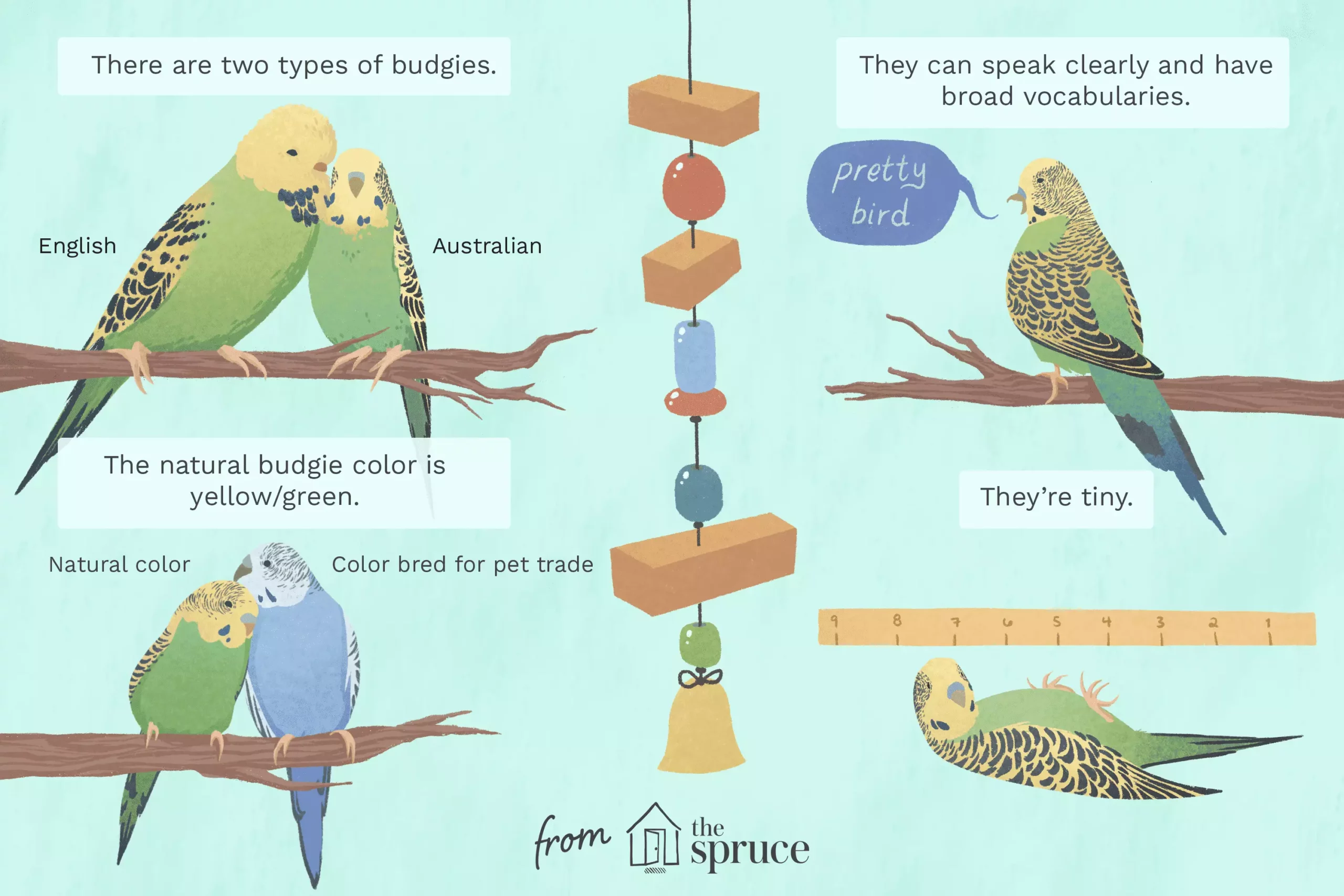Budgerigars, commonly known as budgies, have captured the hearts of bird enthusiasts around the globe. While many may refer to them interchangeably with the term “parakeet,” it is essential to clarify that budgies are just one species within the broader parakeet family, which encompasses a rich diversity of birds in various colors, shapes, and sizes. Understanding the unique characteristics of budgerigars not only enhances our appreciation for these delightful pets but also guides prospective owners in providing the best possible care.
Budgies are a subset of parakeets and should not be confused with all other types in this category. For instance, the Indian ringneck parakeet can grow to an impressive 16 inches long, while the budgerigar typically measures only 7 to 8 inches from beak to tail. This significant size difference highlights the diversity present within parakeets. Moreover, the world of budgerigars is divided into two primary categories: the traditional Australian budgerigars and the larger English budgerigars, which have been selectively bred for exhibition and pet ownership.
If one were to observe the differences between Australian and English budgies, the contrast in size and appearance would be evident. English budgies often possess larger heads and fuller feathering around the face, creating a distinctive look that appeals to avian enthusiasts. Educating oneself on these distinctions fosters better communication and understanding among budgie owners and increases the appreciation of their unique traits.
One of the most captivating aspects of budgerigars is their propensity for vocal mimicry. Although there is no surefire way to guarantee that a budgie will become a proficient “talker,” many have been known to surpass larger parrot species in their ability to articulate words and phrases. The charm of a talking budgie lies in its gravelly sound and impressive vocabulary, often communicating with context in a way that delights owners and entertains visitors alike. This characteristic makes budgies an appealing option for those venturing into bird ownership for the first time.
However, keeping a budgie entertained should not solely focus on speech. Each bird has its personality, ranging from playful to shy, requiring dedicated time for social interaction and mental stimulation. Providing a variety of toys and engaging in daily interactions helps foster a trusting relationship and promotes overall well-being.
Budgies are often associated with vibrant colors, but it’s essential to note that their natural coloration in the wild is the classic yellow-green hue. The colorful variations one finds in pet stores—ranging from blue to white—are the result of selective breeding and genetic mutations rather than natural occurrences. While these color mutations add aesthetic appeal to budgies, they do not affect their care requirements.
Given their small size, budgies are relatively easy to care for financially. Nevertheless, misconceptions abound about their dietary needs. A seed-only diet is not conducive to a healthy budgie and may lead to severe health issues over time. Avian veterinarians recommend a balanced diet that consists primarily of high-quality pellets supplemented with fresh fruits and vegetables, particularly leafy greens. Owners should be cautious to avoid harmful foods, including chocolate, avocado, caffeine, and alcohol, which can jeopardize their pet’s health.
With proper care, budgerigars can live between 7 and 15 years, depending on genetics and environmental conditions. Choosing a budgie from a reputable breeder and consulting for health information about the bird’s lineage can significantly influence life expectancy. Additionally, regular veterinary check-ups and a clean living environment are crucial to preventing health issues.
Creating a safe and enriching environment involves not only maintaining a clean cage but also providing a variety of toys, perches, and opportunities for social interaction. Owners should take precautions to ensure their homes are free from potential toxins, thereby creating a sanctuary for their feathery companions.
New owners may often wonder how to gauge the age of their budgie. Observing the stripes on their heads can provide clues; if the stripes extend to the beak, the bird is likely between 3 to 4 months old. Additional markers, such as the color of the beak and the appearance of the eyes, can assist in determining age and maturity.
Furthermore, caring for a molting budgie can require a bit of extra attention. Providing a shallow dish for bathing or using a plant mister can help alleviate itching and ensure the bird remains comfortable during this natural process.
Budgerigars are not just charming pets but complex beings with distinct needs and features. Owning a budgie is a rewarding experience marked by companionship and the joy of watching these birds express their personalities. By understanding their unique characteristics, one can nurture a deep bond with these small wonders of nature.


Leave a Reply